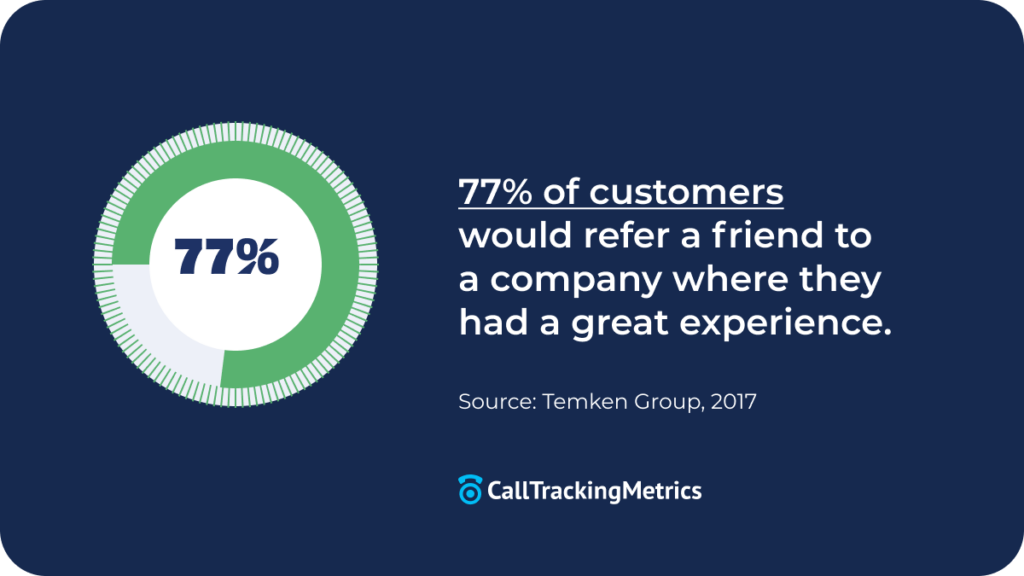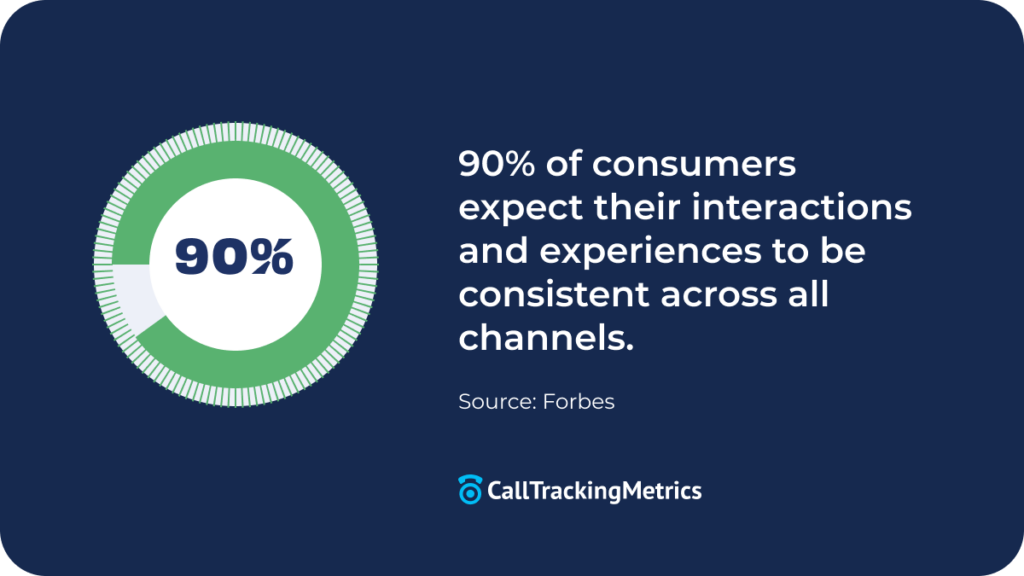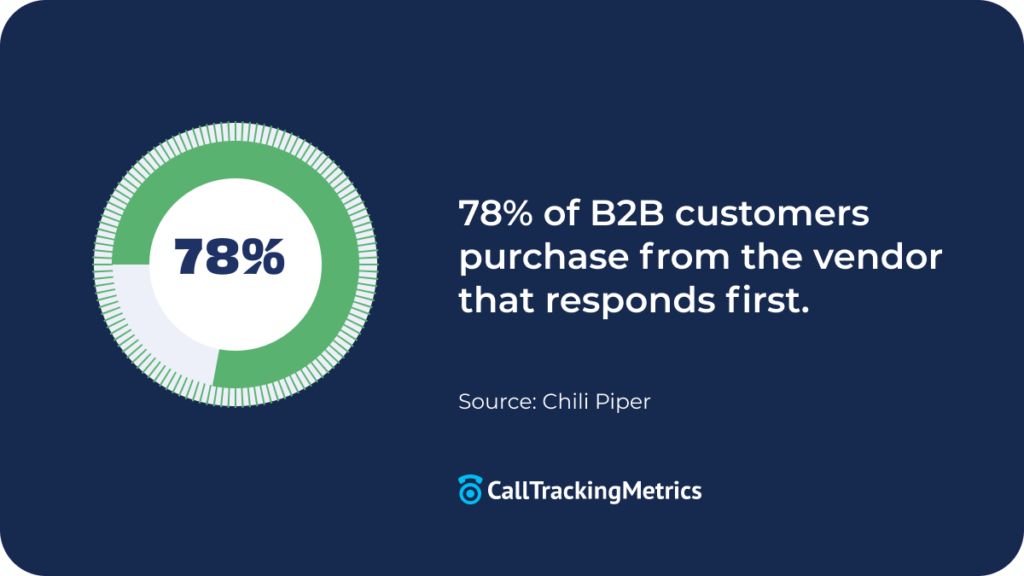Omnichannel Communication Benefits: The Ultimate Guide
Table of Contents:
Introduction
Section 1: What is Omnichannel Communication (and Why Does it Matter)?
Section 2: Top 4 Benefits of Omnichannel Communication
Section 3: Terms to Know
Section 4: Use Cases and Case Studies
Section 5: How to Get Started with Omnichannel Communication
Final Thoughts
Introduction
Omnichannel communications are essential to stay competitive in today’s marketplace. Once thought to be just a passing fad, omnichannel communication is here to stay and if your organization isn’t engaging in it, you could be left behind.
Communications that were once limited to phone calls, in-person meetings, and good ole’ snail mail have grown significantly with the advent of social media, live chat, texts, and more. Companies are often left wondering which, if any, channels they should engage prospects and customers on moving forward. While it may be overwhelming, it’s worth the effort to engage in omnichannel communication as the results can be transformative.
Businesses that employ omnichannel communications experience an 89% customer retention rate, compared to just a 33% retention rate for those not using an omnichannel strategy.
Many organizations think they’re using omnichannel communications, but what they are really using is a multi-channel strategy (and aren’t executing a true omnichannel experience). Not only is it important to understand what omnichannel communications means and how you can get started, but you must also be prepared for the effort and planning required for successfully implementing true omnichannel communications.
However, that shouldn’t stop you from getting started. The rewards for your effort will be more than worth it.
Read on and learn more about omnichannel communication and how to use it to provide value for your organization and customers.

What is Omnichannel Communication (and Why Does it Matter)?
Omnichannel translates to ‘all channel’, with omni meaning all. All channel communication means just that, communication by your company across all channels. This can include email messages and texts as well as in-app communication and social media posts.
Omnichannel communications are all of the communications your organization has with a customer along the entire buyer’s journey–from the first touchpoint to beyond the initial conversion.
What omnichannel communication looks like from one organization to another often varies. Organizations don’t necessarily need to engage on every platform to reach their audience, but they should engage on as many as are relevant to their market
For example, not every company will want to engage with their audience on TikTok, but for some, TikTok may prove hugely valuable to their audience and revenue. For others, LinkedIn or Spotify may be money-makers. Omnichannel communications should be specific to each company and its unique target audience.
Omnichannel communication (and providing a true omnichannel experience), means more than just communicating on these channels. Omnichannel communication means creating an immersive, branded experience that is the same from one channel to the next and from one piece of communication to the next.
This is the stuff great brands are made of.
Whether a prospective or current customer reaches out, no matter if it’s to a live agent, chatbot, social media site, etc., they’ll have the same, unified, branded experience.
Delivering a branded and seamless experience from pre-sales to post-conversion (and for every other touchpoint in between) is key to success and essential for marketers to adopt.
Omnichannel communications tools make this possible.

A successful omnichannel communications strategy not only wins customers time and time again but also creates loyal brand fans who will continue to do business with you and refer their friends and associates. In fact, 77% of customers surveyed said they would refer a friend to a company where they had a great experience.
Why it Matters
Using omnichannel communications to create an exceptional experience for your prospects and customers alike is just one benefit of the omnichannel approach – overall, omnichannel communications play a vital part of any comprehensive marketing and communications plan and can help set your organization apart.
There’s a lot of competition out there today and it just keeps growing. Winning–and keeping– your customer’s attention gets harder and harder each year.
But if you want to win sales, you’ve got to do just that.
A research study by Omnisend found that omnichannel communications saw an 18.96% engagement rate while single channels saw just a 5.4% engagement rate.
One of the best ways to ‘stand out’ is to provide consistency and communicate your message in simple terms using the same voice, tone, and style each and every time. It may seem simple but it can make a big difference.
Think Starbucks. At every Starbucks across the nation, the experience is almost identical. You know exactly what you’ll be getting from the actual product to the customer service and overall experience when you walk into the store.
And it works.
Starbucks’ revenue growth from 2002 to 2022 was over 880%. Whether you opt for a grande or vente, there’s no denying that Starbucks is doing something–a lot of things–right.
When omnichannel became a buzzword in the early 2000s, being able to deliver this type of experience was something reserved for luxury brands or those with lots of capital to invest. However, today’s software like call tracking and other AI-powered tools make it possible for organizations of every size and industry to deliver the much sought-after omnichannel experience.

It’s important to do, 90% of consumers expect their interactions and experiences to be consistent across all channels. This consistency delivers a seamless, VIP-feeling experience to each of your prospects and continues to do so for your returning customers. Omnichannel communications make this possible.
Why You Should Adopt an Omnichannel Communication Strategy

4 Top Benefits of Omnichannel Communication
As the statistics show, implementing omnichannel communication helps deliver a seamless customer experience that helps drive brand loyalty. Let’s take a closer look at a few of the benefits of using omnichannel communications.
1. Establish and Reinforce Branding
We already talked about Starbucks and the branded experience that it brings to the consumer. However, take a minute to imagine the opposite.
What if your customer, with an average of eight touchpoints in their journey, sees messaging on Instagram? Then, a few days later, they see a Facebook Ad that they think is the same company, but this time the messaging sounds more serious and the logo looks a bit different. A week later they go onto your website and the colors are different than on Instagram and Facebook, and the messaging sounds as if it should be in a technical guide.
This kind of brand experience is confusing to potential, or current, customers. and they’ll most likely move on in search of a more consistent, unified experience.
While this example is an exaggeration, as a theoretical comparison to Starbucks, you can imagine which kind of brand experience projects more success and is more attractive to customers. Organizations that deliver the same message and experience across channels, messages, and all interactions win- and they win big.
Organizations that work to stay ‘on brand’ across all their communications channels can create a solid brand identity. When consumers connect with this identity, they start to trust your business and want to do business with you.
In fact, 81% of consumers say they need to trust a brand to consider buying from it.
That trust leads to conversions, and continued trust, in part through brand consistency, leads to loyal customers. Omnichannel communications help to build your brand identity, and in so doing, drive that profitable customer loyalty.
2. Improve Customer Experience (CX)
The competition to deliver an exceptional customer experience is fierce–and crucial to success. When a customer has a poor experience on your website or any other channel, they’ll move on, most likely to your competitors.
However, when you provide prompt, efficient customer service that is ‘on-brand’, across every interaction you’ll win these prospects and keep them as loyal customers.
Organizations in the past have thought if they have a superior product it will sell itself. While a good product is essential, CX is more important than you may think. A research study from Forbes found that 77% of respondents view CX to be as important as product quality.
Yes, it’s that important.
An omnichannel communications strategy helps you do this by providing a streamlined, consistent experience across every interaction.
80% of American consumers say speed, convenience, knowledgeable help, and friendly service are the most important parts of a good customer service experience. Provide this across all of your channels and you’ll create a CX that rivals the best.
3. Improve Speed to Lead
Speaking of speed as an important part of a good CX, when you employ omnichannel communications, you’re providing more ways for prospects and consumers to connect with your brand and for you to connect with them.
This means not only are you meeting your audience where it’s most convenient for them (another part of delivering a great CX), but you’ll also stay top-of-mind for them. Your organization will be the first place they’ll go for more information (or help) which will eventually lead to more conversions.
For example, consider social media. These platforms provide a plethora of ways to connect with your prospects and customers in real-time. When teams use an omnichannel communications strategy, they can include components like providing support team backup using certain social platforms.
This helps prospects and customers to get more immediate, relevant attention and enables sales agents to connect with hot leads quickly. In addition, customer service gets a boost and the churn rate is reduced.

78% of B2B customers purchase from the vendor that responds first.
If they can easily connect with you for relevant, helpful information or support, they’ll come to you again and again.
4. Reduce Customer Churn
Customer churn can bring any organization down, no matter how great their lead gen strategy may be. Omnichannel communications aid in reducing this costly turnover.
When you put the above benefits together,
- Improving how fast you connect
- Establishing branding that provides a feeling of comfort and trust
- Delivering a great CX experience
You’ll keep customers happy, reduce churn, and drive brand loyalty all with omnichannel communications
ChatAI Improves the Customer Experience

Terms to Know
Omnichannel communications
Communications that span across all channels and methods of communication with customers including in-person and digital. Omnichannel communications also implies a cohesive, branded experience across all channels and communications.
Multi-channel communications
This type of communication includes more than one channel where customers can engage with your brand. Organizations can sometimes mistake this type of communication for omnichannel.
Omnichannel strategy
This is the cohesive strategy your sales, marketing, and customer service teams use to guide communications and branding.
Branding
Branding is when a company decides on an ‘identity’ and that becomes their brand. Branding then involves introducing, promoting, and immersing your audience in your brand’s identity.
CX
Customer experience or CX refers to the entire experience a person has with your brand and organization throughout the entire buyer’s journey, at all touchpoints.
Customer churn rate
The annual percentage rate at which customers stop subscribing to a business and their service or products.
Call tracking makes omnichannel communications happen! Learn more about call tracking in our Complete Call Tracking Glossary.

Omnichannel Communication Use Cases
Cutting-edge Communications Playbook
Omnichannel communications marketing tools
Build an Omnichannel Communications Strategy

How to Get Started with Omnichannel Communication
The first step to getting started with omnichannel communications will be different for everyone. You’ll want to take the time to do an honest assessment of your current communications. Take a look at where (and how) you’re communicating with your customers and target audience. Depending on where this falls, you’ll either need to do a lot of work (or, if you’re lucky, you’ll just have to adjust a few things).
If you haven’t identified a brand for your organization, this must be done first. Then you’ll want to learn more about your target audience and where they spend time online and offline when they’re interacting with your brand.
From there, you can implement the specific communications strategy you want and create an omnichannel experience that converts prospects into customers and customers into raving fans.
It’s important to continue to get regular data on your customers. Getting first-hand insight into their behaviors and conversations can ensure you’re a step ahead and anticipating their needs and wants and responding appropriately.
Over time, you can use collected data and AI-powered tools like CTM’s recordings, transcriptions, and AskAI to sort, analyze, and classify key conversation components to find patterns and trends in your target audience’s behaviors.
This information helps to keep departments like marketing, sales, and customer service on the same page and aligned. In addition, it can also help product development teams to understand what improvements, additions, or changes customers want the most.
Build Your Omnichannel Communications Strategy
Final Thoughts
Engaging in omnichannel communications is a win-win for both customers and organizations. Customers enjoy a consistent, branded experience on the channels they use the most. Organizations reinforce their brand’s identity, are better positioned to connect with more customers, and drive loyalty. Ready to see how CTM does omnichannel communications? Book a Demo today!